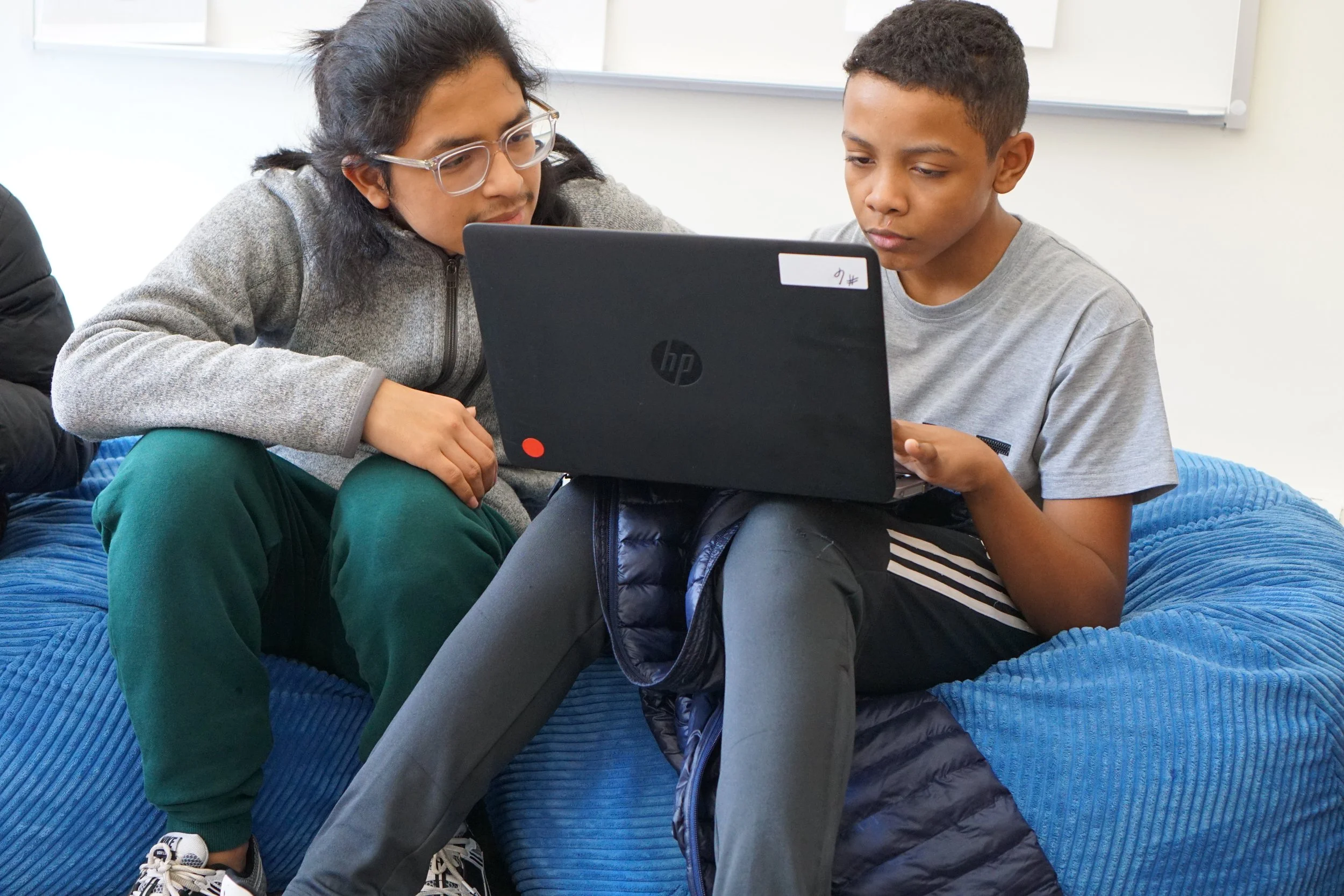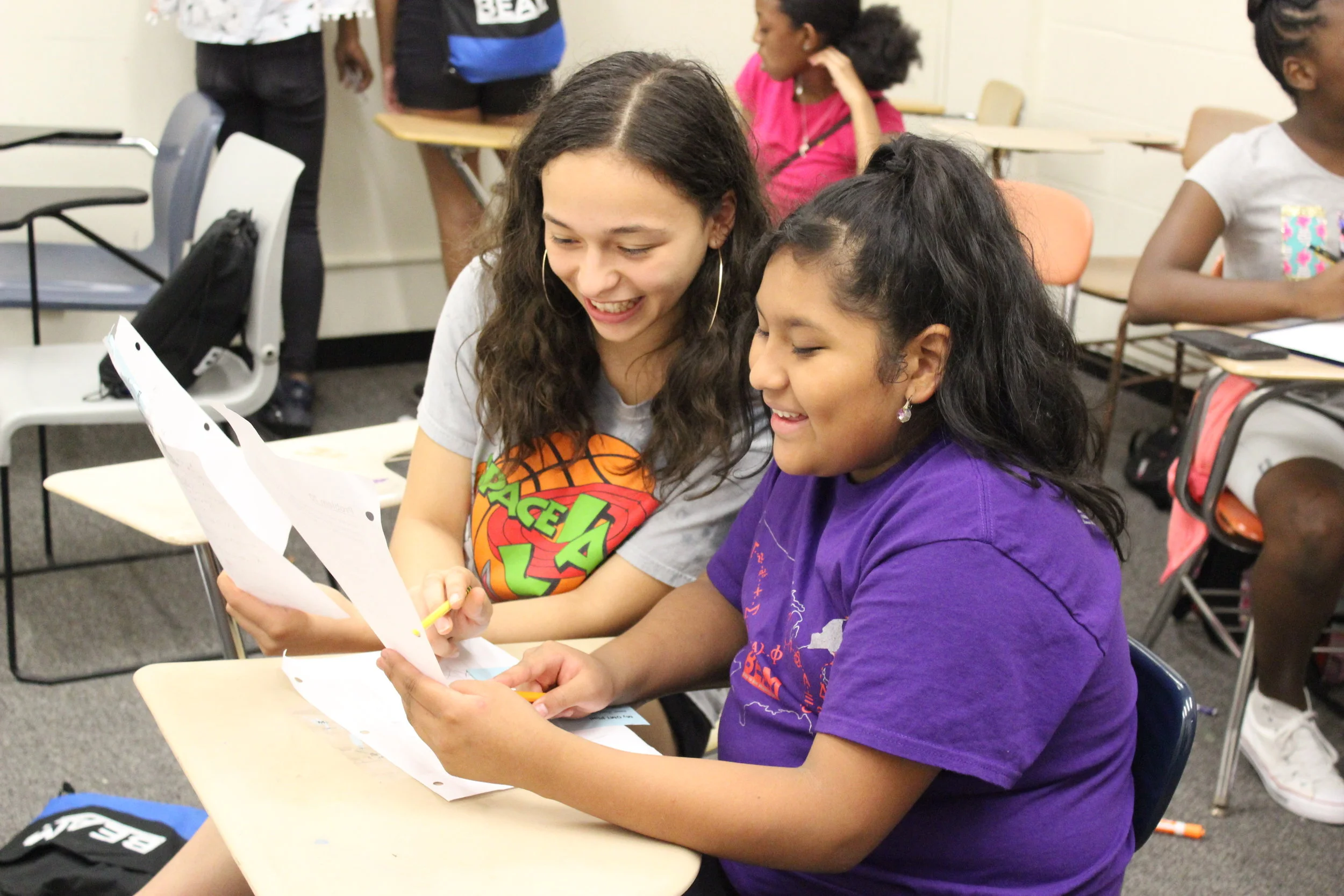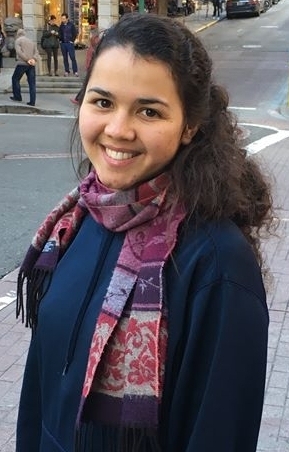
Welcome to the BEAM Blog!
4 for 15: An hour of class at BEAM 6 Uptown
This month, we're welcoming three new full-time staff to BEAM! One of them, Alyssa Loving Jung, is BEAM's new Development and Communications Coordinator. She spent her first week at BEAM visiting BEAM 6 and wrote this blog post about her experience. Welcome to the team, Alyssa!
----
My goal is to sit in on four of BEAM 6 Uptownʻs math classes in a single hour. While I may have an advanced degree in mathematics (a Master's to be precise), it is an ambitious plan. I am eager to see what mathematics the BEAM 6 students will be tackling today.
----
To start off, I get to join the very beginning of a class that appears to be about exponents… or maybe number theory? I am not quite sure. On the board there is a question that immediately catches my eye.
What is the ones digit of 569,423^22?
I can't help it. I immediately start scribbling work in my notebook trying to solve the question. But as discussion swirls around me, I am pulled away from my attempts to solve the problem, curious as to what the students are coming up with. Students wonder out loud how to deal with a problem like this without doing a dizzying degree of multiplication. The instructor, Juan, offers a friendly warning that such an approach would take much more time than they have in class. Returning to my page of notes, I gather from my own work that the key to the problem lies in spotting a pattern and not getting lost in the cumbersome calculations.
Emily works during class.
Around me, I can hear students closing in on the pattern, and it is such fun that I must force myself to remember that I only have 15 minutes at most with them before I have to head to the next class.
Even before my time is up, one of the students is up at the board presenting an idea.
Collaborative mathematics, the courage to expose a budding solution, a still green idea, to an entire class of peers, is a crucial element of pursuing advanced mathematics. I am delighted that BEAM students are engaging with each other and their faculty like this. But glancing at the clock, I must tear myself away and head to the next class.
----
Here there is a very different sort of picture on the board.
There are intersecting circles drawn and numbers scattered about. A student is at the board placing a number with care. While the numbers seem haphazardly distributed at first, the thoughtfulness of the student is the first clue that something more is going on. Then I notice the labels: factors of 6, multiples of 6, primes.
They are exploring logic. The strange picture on the board I recognize as a Venn Diagram, a way to visualize the overlap and interplay between different sets.
They move on from the Venn Diagram on the board to start working on a sheet of problems. A student notices ambiguity in one of the problems. The problem asks them to explore the statement "not A or B". He wonders if the instructor, Sian, means "(not A) or B" or rather "not (A or B)".
The whole class takes time to investigate this subtlety. The process reminds me of writing math proofs during graduate school. Oftentimes the tiniest turn of phrase, the most minute missing detail, can make or break a complex mathematical argument. I am excited to see that the students are taking such care with the reading and writing of mathematics. But it is time for me to move on to my third class.
TA Amaya works with student Karen on a problem set during Open Math Time.
----
Yorlan works on an advanced geoemetry problem.
This class says Geometry and Logic in the corner of the chalkboard at the front. Apparently, it is another class on logic, but now there is geometry thrown into the mix. I am intrigued.
The instructor, Xavier, is energetic and he calls each student by name as he peppers the room with questions.
He wonders how we can figure out what c is when we know c^2=8. A student calls out that c is the square root of 8.
Xavier follows up, smiling, to see if Eduardo was just guessing, but no:
"No, I didn’t guess..." Eduardo responds, "It's 'cause taking the square root is the opposite of squaring something."
I am impressed that in one sentence Eduardo has gotten at the heart of what mathematicians mean by inverse equations. It is a concept that can confound even college students. But I can’t stay for more insights today.
----
I am off to my final class. As I slip into my seat, I am startled to see scrawled across the board: "Are there Aliens in the Milky Way?"
A massive equation containing many letters is sprawled somewhere beneath it. The students are clearly in the process of grappling with the equation and what it means. The instructor, Susan, asks them to replace L = (1/10)^8 in their previous calculation, with L = (1/10)^2. Immediately, diligent pencil-scratching begins, heads bent, eyebrows furrowed with concentration.
This is what I call the "dirty work" of mathematics. Complex computations don’t encompass what mathematicians do. Mathematicians are much more than mere human calculators after all. But such calculations do form an important aspect of the job of many mathematicians and scientists. BEAM students in this class are building the patience and the stamina to handle even very complex formulas, and learning some mind-boggling astronomy at the same time.
Taro, a TA, observes Jamal as he contemplates a large numbers.
Meanwhile, I have set a new personal record for how many classes I have attended in one hour, and better yet I have had the chance to think about some really cool math. I cannot wait for what the next hour of BEAM 6 has in store!
----
Curious about the classes that Alyssa visited? BEAM 6 students all take classes in our four topic areas: Math Fundamentals, Logic, Math Team Strategies, and Applied Math. Within each topic, students get to choose from a menu of classes, so they each take a class that inspires their curiosity. In the mornings, when Alyssa was visiting classes, students were in either their Math Fundamentals class, which explores the why of elementary math, or Logic class, which focuses on how to justify your reasoning. Juan and Susan were each teaching Math Fundamentals courses, while Sian and Xavier teach courses in the Logic track.
Here are the full course descriptions for the four classes she visited!
Exponents: The Super-Powers of Numbers! (Juan)
Using the power of multiplication, we will build some really, really big numbers and compare them to see which ones will turn out to be the biggest. We'll also explore a strange planet which only has 11 numbers in it!
Cryptarithms and Other Arithmetic Puzzles (Sian)
If A + B = AC, then what is A + B + C? Cryptarithms are math puzzles where the arithmetic is simple but the "thinking part" of the puzzle is challenging. We will start with simple problems and build up a tool chest of logic strategies for solving these problems and all math problems.
Geometry and Logic (Xavier)
Ever look at a problem and not know where to start? This class will develop your ability to solve complex problems. We will learn how seemingly incomplete information can be combined to form complete solutions.
Big numbers, Small numbers, and In between (Susan)
Imagine you have a very long number line, with every number you’ve discussed this year in school on the number line. A new number is introduced. Where does it go? Are you sure? In this class, we will use a variety of tools (brain power, rulers, logic, and more) to identify the big numbers, the small numbers, and the ones in between.










